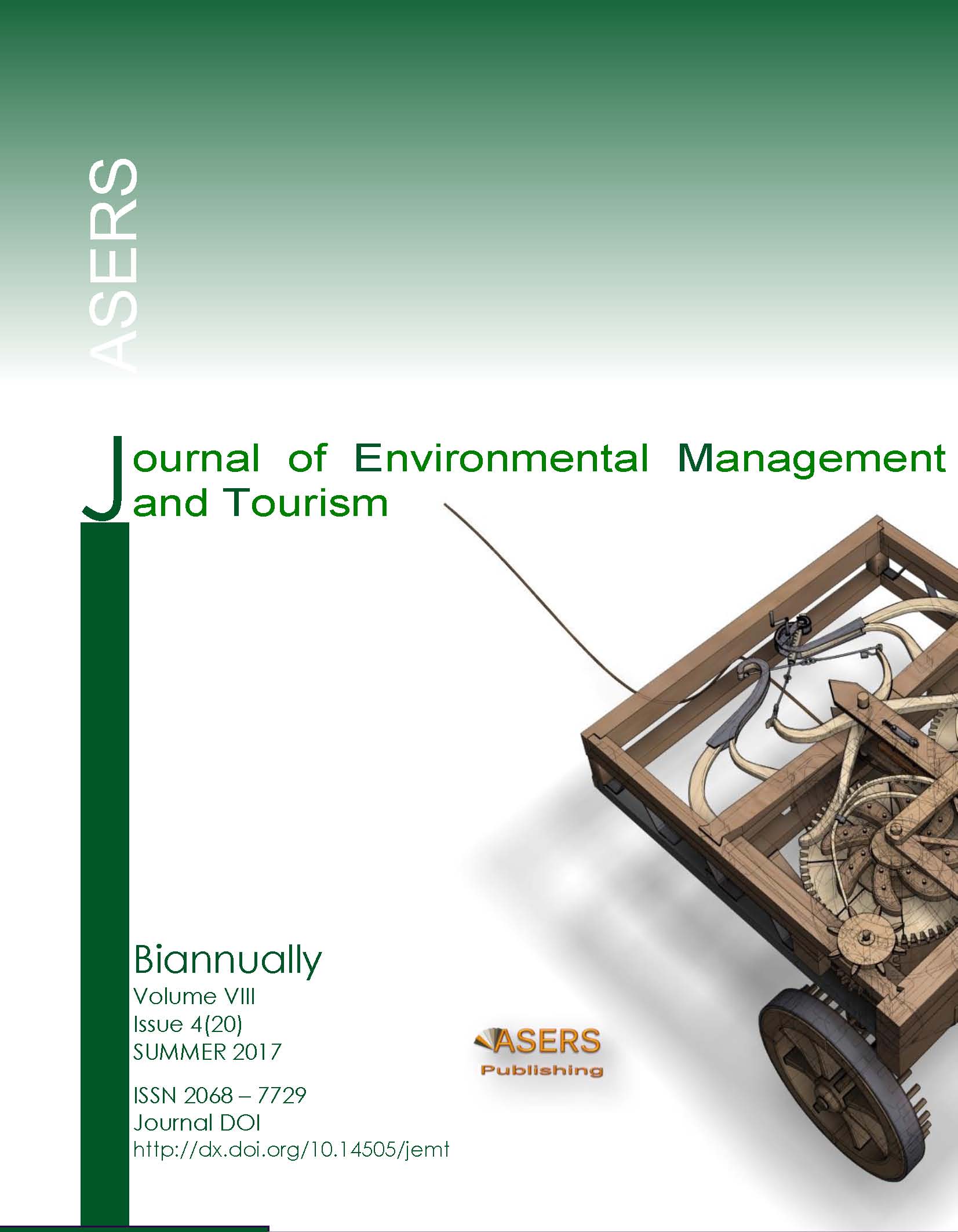Tourists’ Expectation and Perception Regarding Holiday in Jakarta, Indonesia
Abstract
International tourists’ arrival in Jakarta is growing in the past few years. It is important to know tourists’ expectation before visiting Jakarta and their experience afterwards. Hence, marketers can maintain the long term viability of Jakarta as a tourist destination. The aim of this research is to evaluate the successful promoting of Jakarta’s image as a tourist destination through comparing the differences between expectation and experiences of tourists. It also examines the relationship between destination experiences towards revisit intention. Quantitative approach was employed to conduct the analysis through self-administrated questionnaire. Statistical analysis such as descriptive analysis, multiple linear regression and paired sample t-test were conducted. The results depicted the differences between expectation and experiences of tourists in Jakarta. Based on the findings, it is suggested aggressive and continuous efforts should be taken in Jakarta to create alluring destination experience.
References
[2] Baker, D. A., and Crompton, J. L. 2000. Quality satisfaction and behavioral intentions. Annals of Tourism Research, 27(3): 785–804.
[3] Boulding, W., Kalra, A., Staelin, R., and Zeithaml, V. A. 1993. A dynamic process model of service quality: from expectations to behavioral intentions. Journal of Marketing Research, 30(1): 7-27.
[4] Cardozo, R. N. 1965. An experimental study of customer effort, expectation, and satisfaction. Journal of Marketing Research, 3: 244-249.
[5] Chen, C., and Tsai, D. 2007. How destination image and evaluative factors affect behavioral intentions? Tourism Management, 26(1): 45-56.
[6] Goeldner, C. R., and Ritchie, J. B. 2012. Tourism: Principles, Practices, Philosophies. New Jersey: Wiley.
[7] Hendijani, R. B. 2015. Push and pull factors of inbound tourists to Indonesia. Journal of Environmental Management & Tourism, Volume VI, 2(12): 331-337.
[8] Kim, Y. H., Goh, B. K., and Yuan, J. 2010. Development of a multi-dimensional scale for measuring food tourist motivations. Journal of Quality Assurance in Hospitality and Tourism, 11(1): 56-71.
[9] Kozak, M., and Remmington, M. 2000. Tourist satisfaction with Mallorca, Spain, as an off-season holiday destination. Journal of Travel Research, 38: 260-269.
[10] Kurihara, T., and Okamoto, N. 2010. Foreign visitor's evaluation on tourism environment. Journal of the Eastern Asia Society for Transportation Studies, 8: 912-925.
[11] Lau, L., and McKercher, B. 2004. Exploration versus consumption: a comparison of first-time and repeat tourists. Journal of Travel Research, 42: 279-285.
[12] Li, X., and Patrick, J. 2010. Revisiting the commitment-loyalty distinction in a cruising context. Journal of Leisure Research, 42(1): 67-89.
[13] Lopes, S. 2011. Destination image: origins, developments and implications. PASOS. Revista de Turismo y Patrimonio Cultural, 9(2): 305‐315.
[14] McKercher, B., Okumus, F., and Okumus, B. 2008. Food tourism as a viable market segment: It's all how you cook the numbers! Journal of Travel and Tourism Marketing, 25(2): 137-148.
[15] Mukhles, A. 2013. Service quality and its impact on tourist satisfaction. Interdisciplinary Journal of Contemporary Research in Business, 4(12): 164-177.
[16] Neuts, B., Romao, J., van Leeuwen, E., and Nijkamp, P. 2013. Describing the relationships between tourist satisfaction and destination loyalty in a segmented and digitalized market. Unpublished manuscripts.
[17] Nirwandar, S. 2013. Tourism contributes US $8.5 billion to Indonesia Revenues. Available at: http://www.antaranews.com
[18] Roni, S. 2015. Kota Tua, Jakarta`s Historic Building Sites was Visited by 310,506 Tourists. Available at: http://berita2bahasa.com
[19] Oppermann, M. 2000. Tourism destination loyalty. Journal of Travel Research, 39(1): 78-84.
[20] Park, D. B., and Yoon, Y. S. 2009. Segmentation by motivation in rural tourism: A Korean case study. Tourism Management, 30(1): 99-108.
[21] Poria, Y., Biran, A., and Reichel, A. 2009. Visitors’ preferences for interpretation at heritage sites. Journal of Travel Research, 48(1): 92-105.
[22] Rosenbaum, M., and Spears, D. 2009. Using Group Comparisons in AMOS to Explore Shopping as a Travel Driver. International Journal of Culture, Tourism, and Hospitality Research, 3(4): 313-325.
[23] Senders, A., Govers, R., and Neuts, B. 2013. Social media affecting tour operators' customer loyalty. Journal of Travel and Tourism Marketing, 30(1-2): 41-57.
[24] Shirazi, S. M., and Som, A. M. 2010. Relationship marketing and community involvement: Two significant factors for tourism strategies. Sustainable Tourism IV, 139, 47.
[25] Sirakaya-Turk, E., Ekinci Y., and Martin, M. 2015. The efficacy of shopping value in predicting destination loyalty. Journal of Business Research (forthcoming), 68(9): 1878-1885.
[26] Sonnleitner, K. 2011. Destination Image and its effects on marketing and branding a tourist destination. Available at: http://www.diva-portal.org.
[27] Tasci, A. D., and Gartner, W. C. 2007. Destination image and its functional relationships. Journal of Travel Research, 45(4): 413-425.
[28] Tasci, D., and Kozac, M. 2006. Destination brands vs. destination images: do we know what we mean? Journal of Vacation Marketing, 12(4): 299‐317.
[29] Yoon, Y., and Uysal, M. 2005. An examination of the effects of motivation and satisfaction on destination loyalty: a structural model. Tourism Management, 26: 45-56.
*** Euromonitor International. Tourism flows inbound in Indonesia: Indonesia, 2012.
*** UNWTO, I. 2015. World Tourism Barometer, Volume 13, January 2015.
*** Wonderful Indonesia. (n.d.). Retrieved October 18, 2016, http://www.indonesia.travel/en
Copyright© 2025 The Author(s). Published by ASERS Publishing 2025. This is an open access article distributed under the terms of CC-BY 4.0 license.
